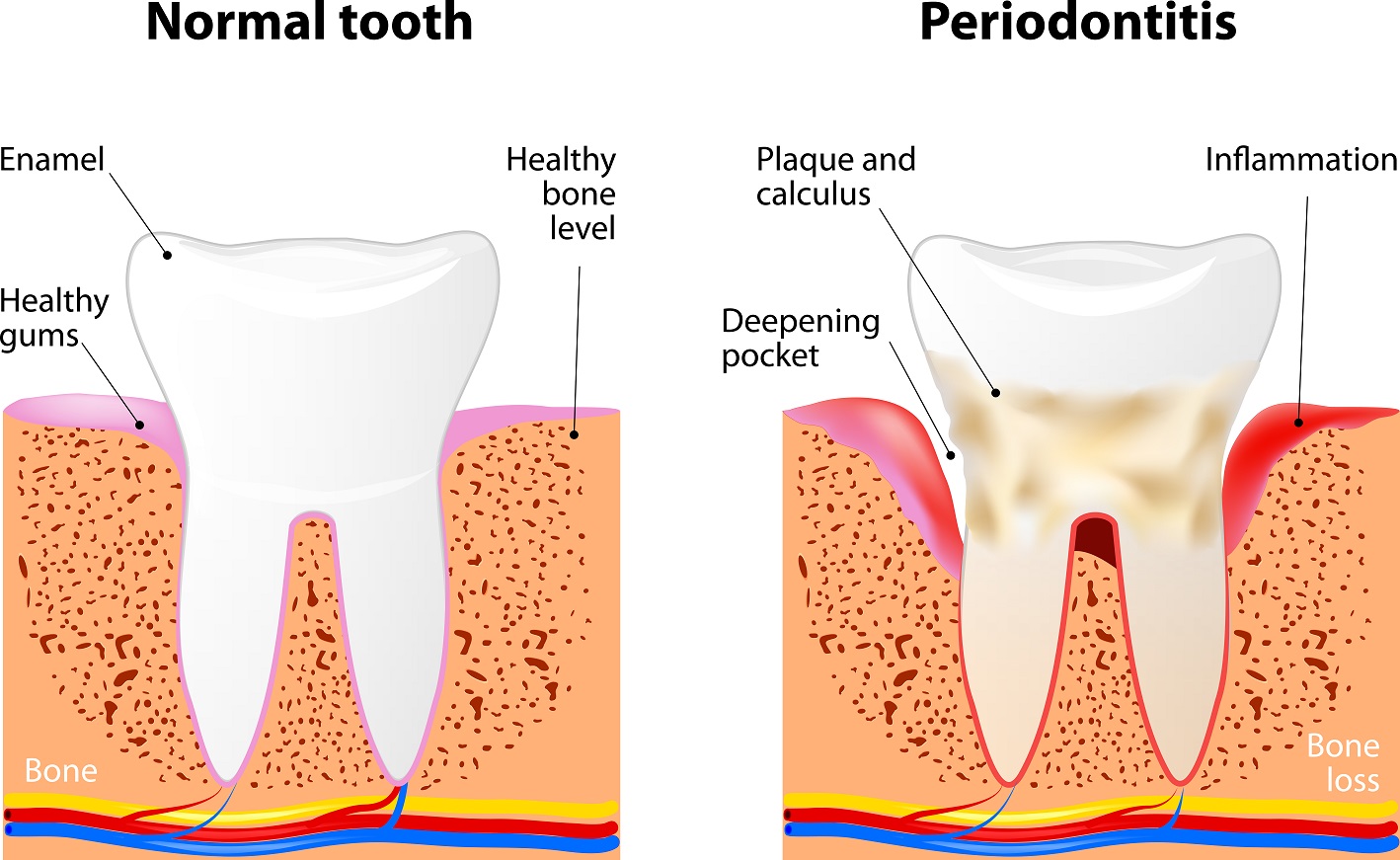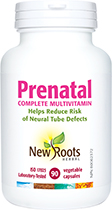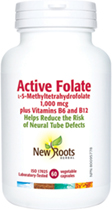Periodontal Changes in Pregnancy and Oil Pulling
Sure, dental cleaning is great for our oral health, but did you know that it can also improve the wellness of your whole body? Daily toothbrushing and flossing is crucial to maintain the health of our gums and teeth; however, this might actually be more important in pregnant women and those looking to conceive.
Consider this: The mouth isn’t just the cavity (no pun intended) that leads to our stomach and gastrointestinal tract, but it is also a gateway for some substances to the bloodstream. Ever wonder why you need antibiotics while having dental work done? Or why is it so important to be on antibiotics for a strep throat (pharyngeal streptococcal) infection? It’s not for your oral health, but for your heart! A simple oral or throat infection can easily move into your bloodstream and affect the valves of the heart, causing rheumatic disease, inflammation of the heart, and chest pain.[1: 27–30] With recurrent infections, this can lead to damaged heart valves. This is just one example of where oral health affects systemic health. Studies have linked chronic oral infections and inflammation to diabetes, lung diseases, risk of stroke, low birth weight, and premature births.[2][3][4] For women especially, there have been links between poor oral health and cardiovascular disease, infertility, and osteoporosis.[4]
Periodontal Disease and Inflammation
Periodontal diseases are inflammatory disorders that cause the destruction of connective tissue and bone tissue that supports a tooth.[4] These include gingivitis, which is associated with gum inflammation and/or bleeding gums, as well as periodontitis, an inflammatory disease of the structures and tissues around the teeth.[3]
Periodontal diseases are most commonly caused by the presence and proliferation of specific microorganisms.[5] The presence of plaque, containing these groups of microorganisms, elicits an immune response and the production of inflammatory cytokines as well as reactive oxygen species (ROS). The resulting inflammation leads to damage of the supporting tissues.[5] This can manifest as receding gum lines and the actual loss of teeth. Therefore, the risk of developing these conditions increases when oral hygiene is neglected and plaque remains around teeth and the gum line.[5]
Oral Health and Pregnancy
Oral microorganisms are often responsible for many of the inflammatory processes in the oral cavity. Certain bacterial species can initiate inflammatory cascades in the surrounding periodontal tissue, leading to an increased risk for gingivitis and periodontitis.[6]
Although the mechanism of action isn’t clearly understood, it seems that oral-health status changes throughout the course of pregnancy. Studies have shown a gradual increase in the incidence of gingivitis from the first trimester to the third.[7] About 50–75% of pregnant women are found to have gingivitis,[3] therefore education and oral hygiene practices need attention in prenatal health—for both mom and baby.
One theory on why this occurs is that the changes and increases in sex hormones throughout pregnancy have an effect on immune-system responses. The link is thought to exist because gingival tissues contain estrogen and progesterone receptors, and there is an increased gingival response to plaque during pregnancy. As far as the immune system is concerned, research has shown that during pregnancy there is a reduction in T-cell activity and phagocytosis of neutrophils, as well as altered lymphocytes responses and reduced antibody production. It is currently understood that these immune-system alterations may be a factor in the change in gum and oral health, as the tissues are affected by changes in circulating estrogen and progesterone.[7]
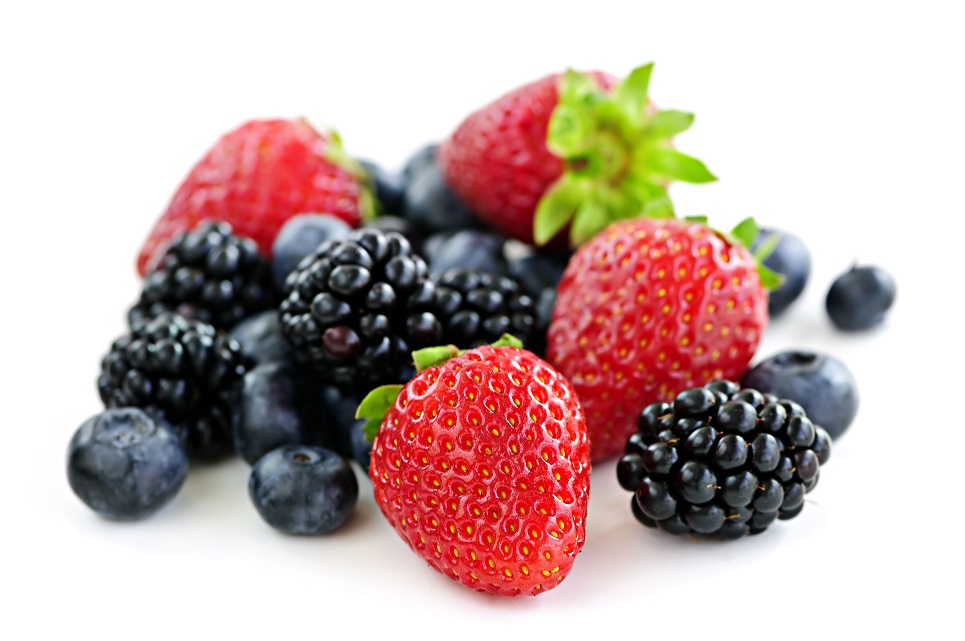 Inflamed periodontal tissue, such as in gingivitis, has been shown to exhibit markers for increased amounts of oxidative stress.[6] Not only was this shown in gingival tissue, but also systemically in plasma and red blood cells.[6] One study showed that markers of oxidative stress in saliva samples are more elevated in pregnancy than in nonpregnant controls. Therefore, pregnancy may put a higher burden of oxidative stress on the body in general, but concurrent periodontal disease and inflammation would create an even higher demand for antioxidant support.
Inflamed periodontal tissue, such as in gingivitis, has been shown to exhibit markers for increased amounts of oxidative stress.[6] Not only was this shown in gingival tissue, but also systemically in plasma and red blood cells.[6] One study showed that markers of oxidative stress in saliva samples are more elevated in pregnancy than in nonpregnant controls. Therefore, pregnancy may put a higher burden of oxidative stress on the body in general, but concurrent periodontal disease and inflammation would create an even higher demand for antioxidant support.
Keep in mind that the body is constantly working to “neutralize.” ROS with antioxidants. If left unaddressed, tissue damage—whether local or systemic—may occur, but the degree of damage is uncertain.
One way to assist the body in this balance of ROS and antioxidant activity is to include antioxidants in the diet in the form of vitamin C and vitamin E.[5] Berries, in particular, are a great source of antioxidants and should be encouraged in the diet.[5] Additionally, decreasing sugar, especially refined sugar, in the diet can help prevent the proliferation of microorganism colonies and reduce plaque buildup.[5]
Improving Periodontal Health
One of the best ways to prevent inflammatory factors and ROS from destroying periodontal tissues is to prevent the formation of plaque and to remove plaque via flossing, from the surface and crevices between teeth.
Apart from dental flossing, positive outcomes in gingival health have been seen from a practice known as “oil pulling.” Oil pulling is a traditional Indian folk remedy consisting of swishing coconut, sesame, or sunflower oil around the oral cavity as a means to strengthen the teeth and gums.[9][10] Additionally, its benefits extend to improving halitosis (bad breath), treating and preventing bleeding gums, and mouth dryness.[9]
So how exactly does it work? Some say that the oils themselves have properties that help eliminate bacteria and are good for overall health. Lignans in sesame oil have a degree of antioxidant properties, but one of best theories of how oil pulling works is via saponification and emulsification: It mechanically cleans teeth by surrounding and trapping bacteria and toxins, holding them captive so you can easily spit out these mini oil “packages.” of microorganisms.[11]
Studies have shown that oil pulling therapy significantly decreases plaque scores and plaque-induced gingivitis.[9][10] This practice has also been shown to be as effective as chlorhexidine oral rinses in the prevention of plaque-induced gingivitis,[9] but without the risk of staining the teeth and oral surfaces, common with chronic and continual use of chlorhexidine rinses.[10][12] Chlorhexidine also carries a potential side effect of changing the user’s perception of taste.[12] Oil pulling therefore is an appropriate and effective alternative for individuals who have experienced side effects of chlorhexidine rinses, or who have a sensitivity to ethanol alcohol or artificial food dyes.[13]
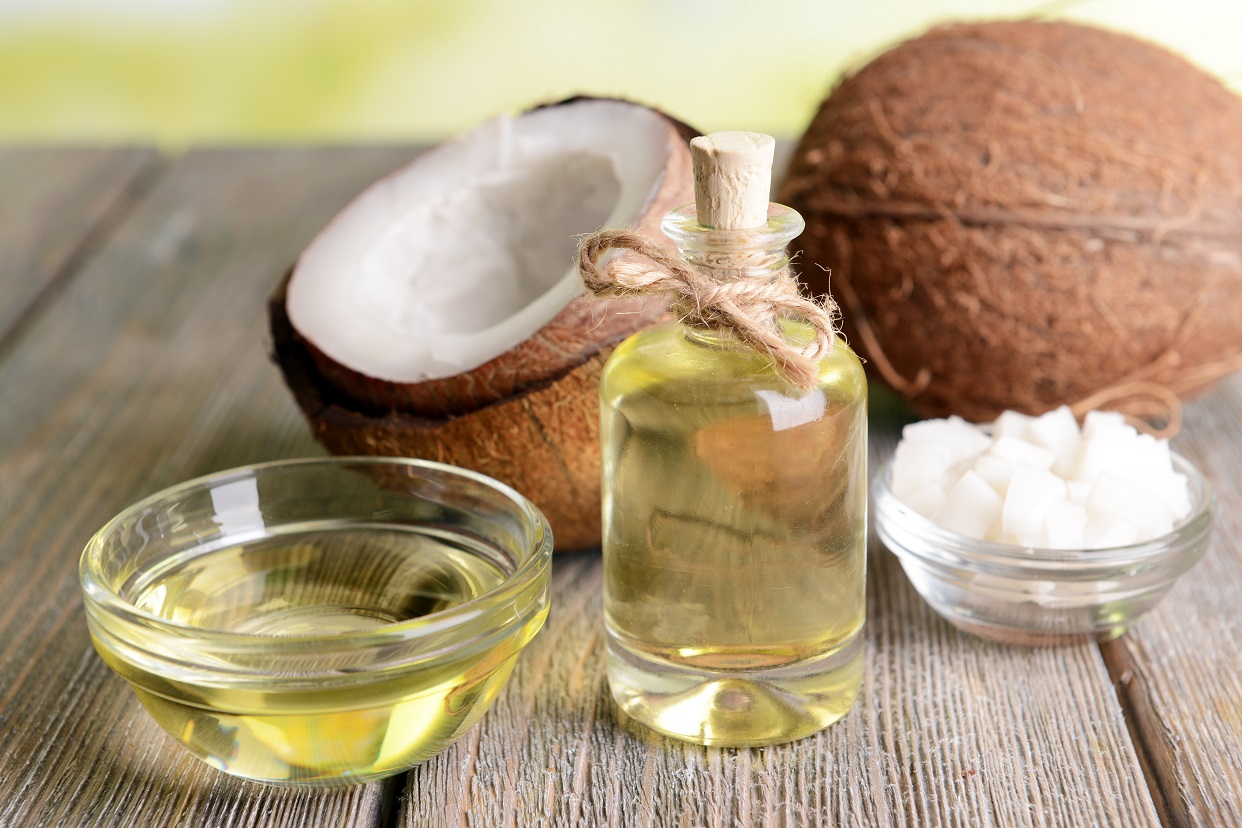
How to Do Oil Pulling
Oil pulling is best done first thing in the morning before eating and brushing the teeth. Start by scooping a tablespoon of oil into the mouth and holding it there. Swish it all around the mouth for about 10–15 minutes, but do not swallow it! Since the oil is used to clean the mouth—it does a great job of holding onto toxins and bacteria—it’s important not to swallow it back into the body. The oil will thin and turn a milky colour, so don’t worry if it keeps mixing with saliva; this is normal.[9] Once the time is up, spit out the oil and the contents of the mouth, and follow with normal toothbrushing.
Conclusions
Oral and periodontal health are essentially linked to overall health. Though we might associate a visit to the dentist with the fear of finding cavities, getting fillings, or other painful procedures, the importance of oral hygiene should not be neglected. This is especially true during pregnancy, as changes in immune responses from increased estrogen and progesterone can alter gingival responses to plaque, thus increasing the incidence of gingivitis and periodontal disease. Don’t hesitate to ask a dental hygienist to go over proper flossing techniques with you, and keep up with regular dental cleaning during pregnancy. In the meantime, it’s worth trying oil pulling as part of your daily oral hygiene routine for healthier gums and teeth.
References
 Dr. Sarah King, ND
Dr. Sarah King, ND
Dr. King believes in a holistic health approach; looking
at both physical and mental causes of imbalance.

 Stores
Stores
